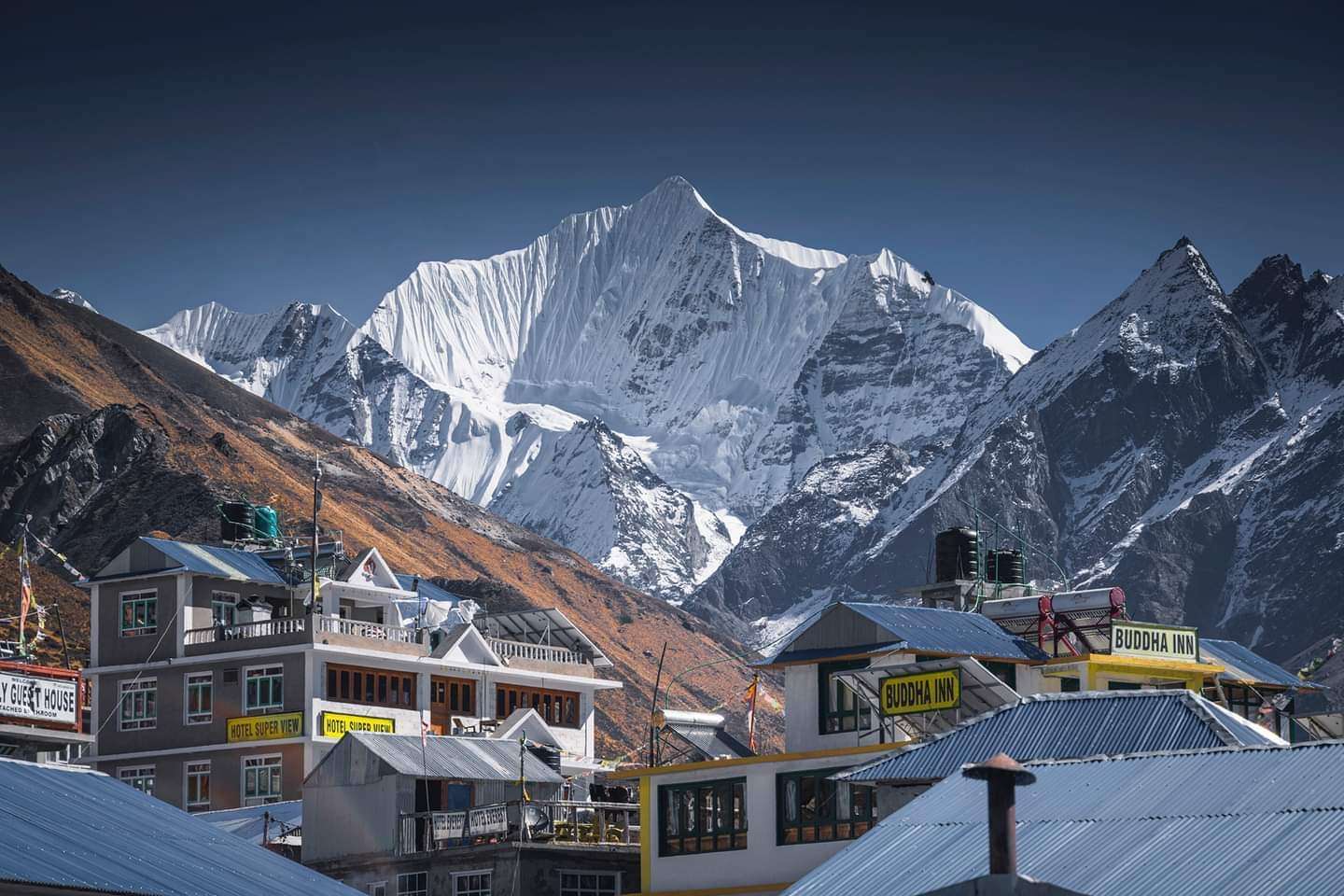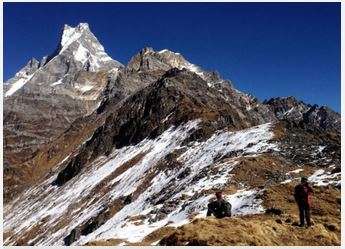Overview
Bhutan is purely a Buddhist Himalayan Kingdom that is unsurpassed in its scenic majesty and vibrant culture. The kingdom shares with Nepal the world’s greatest concentration of Mountains and living heritage of Buddhism.
Bhutan is blessed with numerous varieties ofplants & animalsas 72% of its land is covered by forest. There are 5,400 varieties of plants which includes 300 varieties of medicinal plants, and 46 varieties of rhododendrons. Spring (Mid March – Mid May) is one of the best times as the days are warm, bright and sunny with clear view of the snowcapped mountains. The flowers are in full bloom and the forests are ablaze with magnolias, wild orchids and Rhododendrons.
90 mammals and over 770 species of birdshas been recorded in Bhutan so far. These includethe illusive and endangered snow leopard, blue sheep, red panda,the Royal Bengal tiger, The Takin, marmot, musk deer etc and birds like black-necked cranes, white bellied heron, horn-bills and pheasants live a very protected life.
This festival holds a religious significance and is held to commemorate the birth anniversary of Guru Padmasambhava, the patron saint who introduced Tantric Buddhism in Bhutan. The celebration comprises colorful masked dance and traditional folk songs that are observed by even more colorfully dressed Bhutanese people
An hour flight from Kathmandu to Paro can truly be described as a flight into fantasy. During the flight a firsthand close up view of Mt. Everest, Mt. Kanchenjunga and many other famous Peaks become a reality.
Bhutan
Upon arrival in Paro, meet our representative, board the waiting vehicle and drive to the Thimpu (1 hour) and check into the Hotel.
Thimpu is the capital city & has a population of 45,000. It is, perhaps the most unusual capital city in the world with its bustling town on the banks of its own river and set gloriously in the hills of its own valley. A regal town, Thimphu is home to the revered Bhutanese Royal family and to several foreign missions and development projects.
Dinner and Overnight at the Hotel
After breakfast, proceed for the sightseeing tour of Thimpu with a visit to the National Memorial Chorten also known as Dodrul Chorten. This iconic landmark was envisaged by the third king, His Majesty Jigme Dorji Wangchuck, as a monument to world peace and prosperity. Completed in 1974 after his untimely death, it is both a memorial to the Late King (”the father of modern Bhutan”) and a monument to world peace. The paintings and statues inside the monument provide a deep insight into Buddhist philosophy.
Continue on to the Folk Heritage and National Textile Museums: These museums, both of which opened in 2001 provide fascinating insights into Bhutanese material culture and their way of life. Also visit the Handicrafts Emporium: This government-run enterprise displays a wide range of beautifully hand-woven textiles and craft products. It also carries a small collection of books on Bhutan, Buddhism and Himalayan culture.
Then, visit Taschichho Dzong, the main secretariat building which houses the office and throne room of His Majesty, the king of Bhutan and it is the country’s administrative headquarters as well as the legislative body. The National Assembly lies deep in the valley in all its grandeur.
EVE : Visit The Doderma Buddha, the largest statue of Buddha. From here one can get a panoramic view of the Thimpu Valley.
Dinner & overnight at the Hotel
After breakfast, drive for about 12 km north of Thimphu where the road ends at a parking lot. The trail to Tango Monastery is a climb of 280 m and takes about a little more than an hour to reach it. The walk is through beautiful forests and is an excellent place for bird watching. From the top, it commands good views of the valley.
The Tango monastery is located at an altitude of 8500 meters and was built by Lama Gyalwa Lhanampa in the 12th Century and the present building was built in the 15th century by the Divine Madman, Lama Drukpa Kunley.
History states that in 1616 The Shabdrung Nawang Namgyal visited Tango and meditated in a cave near the gompa.
His meditations helped ensure the defeat of the invading Tibetan army and the head lama, a descendent of Lakpa Drukpa Kunley presented the gompa to him who carved the sandal wood statue of Chenrezig and installed in the monastery. After the sightseeing return back to the Hotel
Dinner & overnight at the Hotel
After breakfast, check out of the hotel and set out to visit the Motithang mini zoo to see the rare ”Takin”, national animal of Bhutan. It is also called Gnu Goat OR Cattle Chamois and found in the eastern Himalayas in forested valleys to rocky, grass-covered alpine zones, at altitudes between 1,000 and 4,500 m above sea level. Takin feed in the early morning and late afternoon, grazing on a variety of leaves and grasses, as well as bamboo shoots and flowers. They have been observed standing on their hind legs to feed on leaves over 3.1 m (10 ft) high. Salt is also an important part of their diets.
Continue past Thimpu by driving on the road that climbs steeply through a forest of pine and cedar, festooned with hanging lichen high up near the Dochula pass (3,050 m), the place of 108 Chortens. This pass often offers panoramic views of the Himalayan mountain ranges and an ideal vantage point to view the mountains (weather permitting).
Later descend to the warmer Lobesa valley also known as Punakha, the former capital of Bhutan is located at 10,000 feet. Upon arrival, check into the Hotel.
PM: Drive 30 minutes to reach Punakha Dzong that was built in 1637 and the winter residence of the monk body.
This remarkable fortress is built between two rivers the Pho-chu (male) and the Mo-chu (female) and has survived many glacial floods and fire. The Punakha Dzong has been restored to its full glory after about 12 years of restoration work and is replete with detailed traditional carvings and colorful paintings in perfect condition. It also houses many sacred temples.
After the sightseeing tour, return to the Hotel.
Dinner and overnight at the hotel
After breakfast proceed for a hike to KhamsumYulleyNamgyal. From the car park, you have to cross a suspension bridge and walk through rice fields before you start climbing a moderately inclined trail surrounded by pine trees. It takes about 1 hour from the car park to hike up to the temple, and 30 minutes to hike down. KhamsumYulleyNamgyal stands majestically on a strategic ridge above the Punakha Valley.
After the hike, drive to the ChimiLakhang Cafeteria for a much deserved lunch break.
After lunch, the hike starts from the restaurant and a brisk 20 minute walk past rich alluvial rice fields through the village of Sosokha brings us to this famous temple “ ChimiLakhang” or popularly known as the “Temple of Fertility.” It is the most revered and visited temples in Bhutan and people from all corners of the country visit the Lhakhang to seek blessings from DrukpaKunley. However, the majority of the visitors are childless couples who come to pray and ask for fertility.All crops grow and thrive well here in the valley and the farmers of this region are among the most well-to-do in Bhutan. They attribute this to the blessings of LamaDrukpaKuenley.
Dinner and Overnight at the Hotel
After breakfast, drive for about 2 ½ hours to Gangtey. The road travels eastwards to and by way of the ChendebjiStupa and the Pele La at 11,000ft/3,353m and then descend for few kilometers to the junction where it leads to the glacial valley of Phobjika.This small village on the edge of the black mountains is famous for its monastery of gomchens and the black necked cranes (grusnigricolis) which fly in during the winter from Tibet and return in spring.Upon arrival, check into the Hotel.
PM: Sightseeing of the Gangtey Monastery which is an important monastery of the Nyingmapa school of Buddhism, the main seat of the Pema Lingpa tradition located in the WangduePhodrang district in central Bhutan.
The Monastery, also known by the Gangten village that surrounds it, is in the Phobjika Valley. The Monastery’s history traces to the early 17th century and back to the
prophecies made by the well-known Terton (treasure finder) PemaLingpa in the late 15th century. After the visit to Gangtey Monastery, return to the Hotel.
Dinner & Overnight at the Hotel
After breakfast drive to Trongsa (120 kms / 4 hours) and upon check into the hotel. Trongsa forms the central hub of the nation and is historically the place from where attempts at unifying the country were launched. Both His Majesty King UgyenWangchuck, the Penlop of Trongsa, who was elected the country’s first hereditary monarch and his successor, King JigmeWangchuck, ruled the country from Trongsa’sancient seat. The Crown Prince of Bhutan normally holds the position of the TrongsaPenlop prior to ascending the throne. The entire landscape around Trongsa is spectacular.
PM: Visit TrongsaDzong, the largest Dzong in Bhutan and certainly one of the most impressive.Built in 1648, it was the seat of power over central and eastern Bhutan and both the first and second King ruled the country from this ancient seat.
Protected from invaders by an impenetrable valley, TrongsaDzong is an impregnable fortress. The Dzong itself is a labyrinth of temples, corridors and offices holding court over the local community. It is built on many levels into the side of the hill and can be seen from every approach to Trongsa heralding its strength as a defensive stronghold.
Later drive to the Ta Dzong, a cylindrical stone structure rising five storeys, was built in 1652 by ChogyalMinjurTempa, a task entrusted to him by ZhabdrungNgawangNamgyal. After more than 350 years, it has been resurrected into a classy museum that
represents a tasteful blend of tradition and modernity. There are 224 items on display including a sacred image of Sung JoenmaDorji Chang (self-spokenVajradharna), a bronze statue of PemaLingpa, made by himself, and a number of centuries-old treasures like dance and ritual costumes and objects, ancient prayer books, paintings and scrolls, and textiles.
After the sightseeing tour, descend to the town by a walk way and head back to the hotel
Dinner and Overnight at Hotel
After breakfast, drive to Bumthang across the Yotong La pass 11,234’, and then descend into Chumey valley, the first of four Bumthang valleys. In Chumey, visit Yathra Weaving centers (a Colorful wool weaving).
Bumthang valley is considered one of the most sacred in the kingdom and innumerable legends surround the area. It is here that the kings were cremated and the present royal families trace their ancestry back to a famous saint called PemaLingpa. This is one of the most spectacular valleys in Bhutan and also the heartland of Buddhism.
The Guru and his lineage of Tertons (treasure finders), have led to the sprouting of many temples in the valley. Upon arrival check into the Hotel, Lunch at the Hotel,
Later, visit the Cheese Factory and the 1st Brewery of Bhutan
Fritz Maurer was 29 years old and living in Bern, Switzerland when he spotted an ad in a Swiss newspaper from the Kingdom of Bhutan seeking its first steps towards
modernization. A cheese-maker by training, Maurer moved to Gogona, Bhutan to help implement new dairy processing techniques. Maurer immediately fell in love with his new surroundings.
Unsatisfied with cheese alone, Maurer soon branched out into various other modernization initiatives. Bhutan’s apple surplus in the 1970s inspired Maurer to purchase two large cider presses from Switzerland. In April 1977, he was appointed as the District Agriculture and Animal Husbandry Officer. Maurer also introduced beekeeping to Bhutan in 1986 and established a brewery in Bumthang in 2006, producing a popular brew called Red Panda.
This small factory, founded by Swiss Bhutanese produces a variety of Swiss cheeses, clover honey, apple cider, wine, apple brandy and local beer. It is an interesting place to see, sample and purchase some to try.
Dinner & Overnight at the Hotel
After breakfast, set out for the sightseeing tour of Bumthang,
Nowhere other thanBumthang, a beautiful valley in Central Bhutan, one can find as many temples and monasteries. The valley is wide and open and the hills slopes gently unlike other districts. The renowned Kurji(where the Guru Rinpoche subdued a local demon and left his body imprint on a rock) and the JampaLhakhang, the oldest monastery built by SongtsenGampo in the 7th century, are located here. The famous Yathra fabrics, woven out of sheep wool, for jackets are widely available in Bumthang.
Wangdicholing, the palace where the first king was born lies just below the JakarDzong, or Dzong of the ”White Bird”.
After the sightseeing tour, return to the hotel,
Dinner and overnight at hotel
Transfer to the airport and fly Bumthang to Paro (30 minutes). Upon arrival in Paro transfer to the Hotel,
Later visit KyichuLhakhang, one of Bhutan’s oldest and most beautiful temples. The temple is popularly believed to have been built in 659 by King SongtsenGampo of Tibet, to pin down the left foot of a giant ogress who was thwarting the establishment of Buddhism in Tibet. As one enters the intimate inner courtyard, there is a mural to the right of the doorway of King Gesar of Ling, the popular Tibetan warrior-king, whose epic poem is said to be the world’s longest.
AshiKesangWangchuck the third King’s wife sponsored the construction of the Guru Lhakhang in 1968. It contains a 5m-high statue of Guru Rinpoche and another of Kurukulla (Red Tara), holding a bow and arrow made of flowers. The inner hall of the main JowoLhakhanghouses an original 7th-century statue of JowoSakyamuni, said to have been cast at the same time as the famous statue in Lhasa.
Rest of the day is free to browse through the Bazaars of Paro.
Dinner and Overnight at the Hotel
After an early breakfast board the waiting vehicle and drive to SatsamChorten (10 Kms) for a short trek to Taktsang Monastery. The Taktsang also known as “the Tiger’s Nest” was named after Guru Rimpoche miraculously flew to the cave on the back of a tigress from Khempajong in the region of Kurtoe.
From Satsam, start a steady climb of about 2 ½ – 3 hours on a well-defined trail through wooded alpine forests to the Taktsang Monastery. According to the legend, the tigress was a form taken by a consort for the occasion. Guru Rimpoche meditated for three months in a cave in Taktsang and converted the Paro valley to Buddhism. Later, LongchenPelkiSingye, a student of Guru Rimpoche also meditated here in a cave which came to be known as Pelphug or “Pelki’s Cave.
Taktsang is one of the holiest pilgrim sites in the Himalayas. There are 13 holy places in the complex. His Holiness, the 69th Je Khenpo Late GaysheGadenRinchen was born in a cave on the way to the last viewpoint of Taktsang.
After the visit walk down to the restaurant for a much deserved lunch break.
After lunch, descend to the valley floor in about an hour to meet up with waiting vehicles and drive to Paro town.
The late afternoon is free to browse around the souvenir shops and then return to the Hotel.
Dinner and Overnight at the Hotel
Departure Paro
Day free until final departure transfer to airport for onward flight








